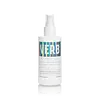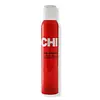What's inside
What's inside
 Key Ingredients
Key Ingredients

 Benefits
Benefits

 Concerns
Concerns

 Ingredients Side-by-side
Ingredients Side-by-side

Water
Skin ConditioningTrisiloxane
Skin ConditioningCoconut Alkanes
EmollientC14-22 Alcohols
Emulsion StabilisingPhenyl Trimethicone
Skin ConditioningPrunus Persica Kernel Oil
EmollientRosa Canina Fruit Oil
EmollientHydrolyzed Vegetable Protein Pg-Propyl Silanetriol
Skin ConditioningAmodimethicone
Parfum
MaskingPolysorbate 20
EmulsifyingXanthan Gum
EmulsifyingCoco-Caprylate/Caprate
EmollientC12-20 Alkyl Glucoside
EmulsifyingQuaternium-91
Squalane
EmollientCetearyl Alcohol
EmollientSodium Laneth-40 Maleate/Styrene Sulfonate Copolymer
Bakuchiol
AntimicrobialNiacinamide
SmoothingTrideceth-12
EmulsifyingGlycerin
HumectantEthylhexylglycerin
Skin ConditioningPolyacrylate Crosspolymer-6
Emulsion StabilisingLactic Acid
BufferingCetrimonium Chloride
AntimicrobialCitric Acid
BufferingGlucose
HumectantTribehenin
EmollientHydrogenated Castor Oil/Sebacic Acid Copolymer
EmollientT-Butyl Alcohol
PerfumingCaprylyl 2-Glyceryl Ascorbate
AntioxidantDisodium EDTA
Hydrolyzed Sodium Hyaluronate
Skin ConditioningSodium Hyaluronate
HumectantCetrimonium Methosulfate
AntimicrobialPotassium Sorbate
PreservativePhenoxyethanol
PreservativeAlpha-Isomethyl Ionone
PerfumingBenzyl Cinnamate
PerfumingBenzyl Salicylate
PerfumingButylphenyl Methylpropional
PerfumingCitronellol
PerfumingGeraniol
PerfumingHexyl Cinnamal
PerfumingHydroxycitronellal
PerfumingLimonene
PerfumingLinalool
PerfumingWater, Trisiloxane, Coconut Alkanes, C14-22 Alcohols, Phenyl Trimethicone, Prunus Persica Kernel Oil, Rosa Canina Fruit Oil, Hydrolyzed Vegetable Protein Pg-Propyl Silanetriol, Amodimethicone, Parfum, Polysorbate 20, Xanthan Gum, Coco-Caprylate/Caprate, C12-20 Alkyl Glucoside, Quaternium-91, Squalane, Cetearyl Alcohol, Sodium Laneth-40 Maleate/Styrene Sulfonate Copolymer, Bakuchiol, Niacinamide, Trideceth-12, Glycerin, Ethylhexylglycerin, Polyacrylate Crosspolymer-6, Lactic Acid, Cetrimonium Chloride, Citric Acid, Glucose, Tribehenin, Hydrogenated Castor Oil/Sebacic Acid Copolymer, T-Butyl Alcohol, Caprylyl 2-Glyceryl Ascorbate, Disodium EDTA, Hydrolyzed Sodium Hyaluronate, Sodium Hyaluronate, Cetrimonium Methosulfate, Potassium Sorbate, Phenoxyethanol, Alpha-Isomethyl Ionone, Benzyl Cinnamate, Benzyl Salicylate, Butylphenyl Methylpropional, Citronellol, Geraniol, Hexyl Cinnamal, Hydroxycitronellal, Limonene, Linalool
Isododecane
EmollientIsobutane
Propane
C12-15 Alkyl Benzoate
AntimicrobialAlcohol Denat.
AntimicrobialPhenyl Trimethicone
Skin ConditioningEthyl Ester Of Hydrolyzed Silk
Skin ConditioningEthylhexyl Methoxycinnamate
UV AbsorberPanthenol
Skin ConditioningParfum
MaskingBenzyl Benzoate
AntimicrobialButylphenyl Methylpropional
PerfumingHexyl Cinnamal
PerfumingCitronellol
PerfumingAlumina
AbrasiveSilica
AbrasiveCI 77891
Cosmetic Colorant
 Reviews
Reviews

Ingredients Explained
These ingredients are found in both products.
Ingredients higher up in an ingredient list are typically present in a larger amount.
Butylphenyl Methylpropional is a synthetic fragrance. You might know it as "lilial". The scent of this ingredient is floral-like and similar to the scent of lily flowers.
In March of 2022, the EU banned this ingredient in both rinse-off and leave-on products. This is because research found Butylphenyl Methylpropional to disrupt fertility in rats.
This ingredient is also a known EU allergen, meaning it is likely to cause an allergic reaction. Irritated skin can be damaging.
We always recommend speaking with a professional if you have any concerns or questions about this ingredient.
Learn more about Butylphenyl MethylpropionalCitronellol is used to add fragrance/parfum to a product. It is often derived from plants such as roses. In fact, it can be found in many essential oils including geranium, lavender, neroli, and more. The scent of Citronellol is often described as "fresh, grassy, and citrus-like".
Since the Citronellol molecule is already unstable, Citronellol becomes irritating on the skin when exposed to air.
Citronellol is a modified terpene. Terpenes are unsaturated hydrocarbons found in plants. They make up the primary part of essential oils.
Citronellol is not able to be absorbed into deeper layers of the skin. It has low permeability,
Citronellol is also a natural insect repellent.
Learn more about CitronellolHexyl Cinnamal is a fragrance ingredient with a similar scent to jasmine. It can be naturally found in chamomile essential oil.
This ingredient is a known EU allergen and may sensitize the skin. The EU requires this ingredient to be listed separately on an ingredients list.
Hexyl Cinnamal is not water soluble but is soluble in oils.
Learn more about Hexyl CinnamalParfum is a catch-all term for an ingredient or more that is used to give a scent to products.
Also called "fragrance", this ingredient can be a blend of hundreds of chemicals or plant oils. This means every product with "fragrance" or "parfum" in the ingredients list is a different mixture.
For instance, Habanolide is a proprietary trade name for a specific aroma chemical. When used as a fragrance ingredient in cosmetics, most aroma chemicals fall under the broad labeling category of “FRAGRANCE” or “PARFUM” according to EU and US regulations.
The term 'parfum' or 'fragrance' is not regulated in many countries. In many cases, it is up to the brand to define this term.
For instance, many brands choose to label themselves as "fragrance-free" because they are not using synthetic fragrances. However, their products may still contain ingredients such as essential oils that are considered a fragrance by INCI standards.
One example is Calendula flower extract. Calendula is an essential oil that still imparts a scent or 'fragrance'.
Depending on the blend, the ingredients in the mixture can cause allergies and sensitivities on the skin. Some ingredients that are known EU allergens include linalool and citronellol.
Parfum can also be used to mask or cover an unpleasant scent.
The bottom line is: not all fragrances/parfum/ingredients are created equally. If you are worried about fragrances, we recommend taking a closer look at an ingredient. And of course, we always recommend speaking with a professional.
Learn more about ParfumPhenyl Trimethicone is a silicon-based polymer. It is derived from silica.
Phenyl Trimethicone is used as an emollient and prevents products from foaming.
As an emollient, it helps trap moisture in the skin. It is considered an occlusive.
Learn more about Phenyl Trimethicone